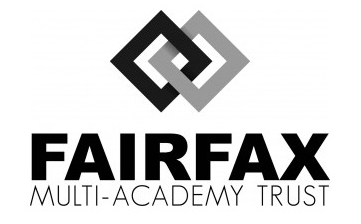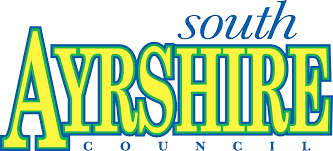A significant and increasing number of children arrive at secondary school with poor reading. This must be one of the most important things for each secondary to solve. Children with poor reading will not do well in any curriculum area.
Numerous studies and reports from schools show that at least 20% of pupils arrive at secondary schools behind their peers when it comes to reading.
Without effective support, those 20% (or more, in some cases) of will struggle all through school, and go onto to struggle in numerous ways as adults. A National Literacy Trust report states that: “1 in 6 (16.4%) adults in England are estimated to have very low literacy.”
In this article, we cover the challenges that secondary schools face when teaching literacy, reading, and English, and how teachers, TAs, SENDcos, and literacy leads can implement an evidence-based online literacy intervention programme to tackle them.

What challenges do secondary schools face when teaching literacy, reading, and English?
Every secondary school has its own challenges. In many ways, it depends on the catchment area a school operates in. Schools in socio-economically deprived and struggling areas will face more challenges than schools with fewer socio-economic difficulties.
Consequently, some schools will have more literacy and reading challenges than others when there’s a higher percentage of children with special needs (SEND), from disadvantaged backgrounds, or who speak English as another language (EAL).
When children join a secondary in Year 7 (KS3), these challenges will manifest with them having lower reading and literacy abilities. If children struggle with reading, this will affect them far beyond their abilities in English. An inability to read and write at the same level as their peers, as per curriculum guidelines for a childs age will negatively affect them across every curriculum area.
In most cases, teachers, TAs, and SENDcos will struggle to help improve pupils' literacy and reading attainment and outcomes without a targeted literacy intervention programme. That’s where ReadingWise can play a pivotal role.
“ReadingWise offers us a way to close the gap as pupils move from primary to secondary, and I think crucially within the school, it offers us a way to close the gap as they progress through the year groups.”
Headteacher, St Ambrose Barlow High School, Salford.
Read more of our case studies.

Want to fund ReadingWise using the Pupil Premium? Not a problem, here’s how you can apply for funding with our help.
Why secondary schools need a literacy intervention programme?
In secondary schools where pupils are struggling with literacy and reading, a targeted literacy intervention can make a huge difference.
ReadingWise is a complete, evidence-based online literacy intervention solution for secondary schools. Over 300,000 pupils have completed ReadingWise programmes to improve their reading.
Robust government-funded evidence demonstrates that ReadingWise produces a reading age increase of over 9 months in 1 term.
Here are 10 reasons why secondary schools need a literacy intervention programme:
- Enhancing literacy skills and educational outcomes for every pupil from Year 7 (the start of KS3) through to the GCSEs.
- A ReadingWise literacy intervention programme can be tailored to address specific requirements, including for pupils with SEND and EAL needs.
- Utilising data and assessment results, the programme can identify students who require additional support and provide targeted literacy interventions.
- Implementing a standardised literacy programme can ensure consistency in teaching practices across every age group.
- ReadingWise solves the problem for teachers: “Where do I start?”; “How do I create resources to improve literacy?” Our programme takes care of everything.
- An online literacy intervention programme can help teachers support parents and guardians too, so that even if a responsible adult can’t effectively support a child, this programme can help.
- Pupils who leave school with higher English grades and greater levels of reading fluency earn more. Adults with lower levels of literacy earn 7.1% less than those with a better understanding of reading.
- Literacy interventions change lives. In schools (primary and secondary), 20% of children fail to achieve adequate literacy levels before leaving school. This equates to “1 in 6 (16.4%) adults in England are estimated to have very low literacy” (OECD, 2016).
- Consequences of this range anywhere from unemployment to falling into criminal activity. According to the World Literacy Foundation, a 2018 study found that “illiteracy is estimated to cost the UK economy approximately £80 billion [per year].”
- Tragically, there’s a clear correlation between illiteracy, the ability to find work, and crime. A Ministry of Justice (MoJ) report in 2022 found that “57% of adults in prison in the UK have a reading level below that of an average 11-year-old.”
How ReadingWise works and how to implement it in a secondary school
Our programmes support KS3 and KS4 pupils in England and Wales ⏤ whether your school is an academy, Local Authority-maintained, free school, voluntary aided or controlled, or a special needs school ⏤ and S1 to S4 pupils in Scotland.
There are three steps every secondary school needs to take to implement ReadingWise effectively:
- Tailored testing to align the ReadingWise Modules with pupils' needs.
One of the most effective ways to assess which ReadingWise modules are needed is using standardised reading (NGRT) assessments as a pre-implementation benchmark.
This careful matching of literacy programmes to the needs of pupils is another feature of ReadingWise that other online literacy programmes don’t offer. Based on the results, students can be placed in one of four categories before a ReadingWise roll-out:
- Category 1: fluent readers (standardised score of 100+);
- Category 2: pupils at risk of not accessing the curriculum (standardised score of 85 to 100);
- Category 3: early readers (score below 85);
- Category 4: pupils new to English.
With the establishment of these cohorts, timetabling can be implemented to ensure needs were met in a methodical, measurable way. Using this data, pupils’ needs can be matched and calibrated to the four core ReadingWise modules: Zip, Vocab, Comprehension, and Decoding.
- Methodical training of teaching and other staff who will be using the programme
Staff at every level, including teachers, TAs, literacy leads, and SEND specialists, are then trained in Zip, Vocab, Comprehension, and Decoding.
Don’t worry though, training doesn’t take days or weeks. It doesn’t even have to be done on-site. All it takes is 2 hours of online training.
- Integration with other school software/systems to make admin easier
Most schools use a MiS (Management Information System) for admin and other tasks, so it’s important that this is connected quickly and efficiently to the ReadingWise system. This will save many hours of administration time for teaching staff, ensuring they could focus on teaching and supporting students, rather than doing extra admin work.
Reporting tools within the ReadingWise programme allowed the literacy leads to quickly and efficiently review engagement, impact, and student progress.
Want to fund ReadingWise using the Pupil Premium? Not a problem, here’s how you can apply for funding with our help.
Find out more about our:
Boost your school's literacy results: Arrange your 20-minute demo at a time to suit you.
We highly recommend you spend 20-minutes running through the programme with our friendly and knowledgeable team by booking a demo to suit your diary








